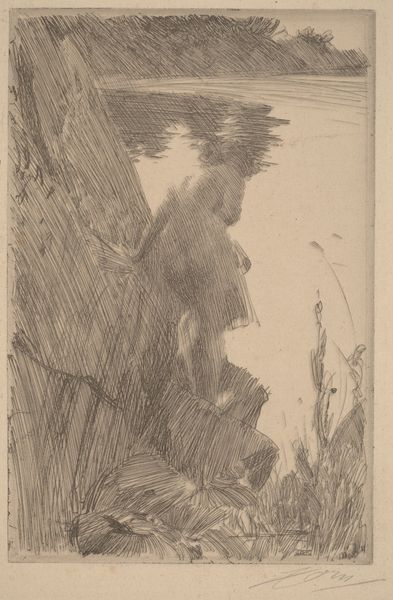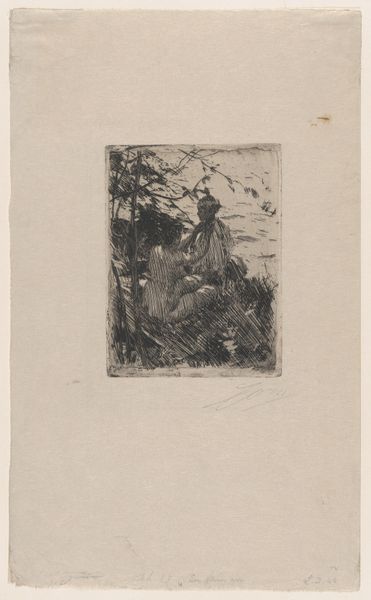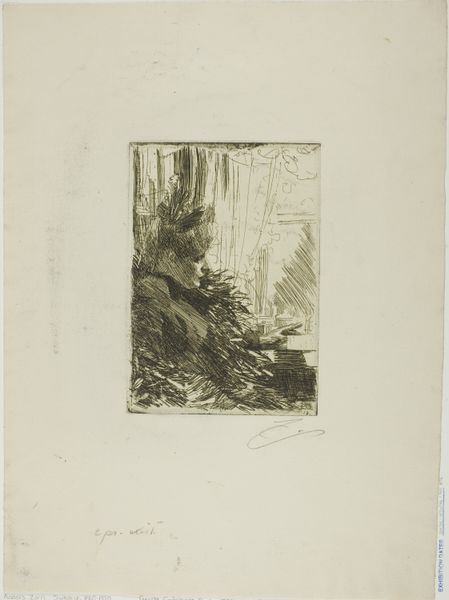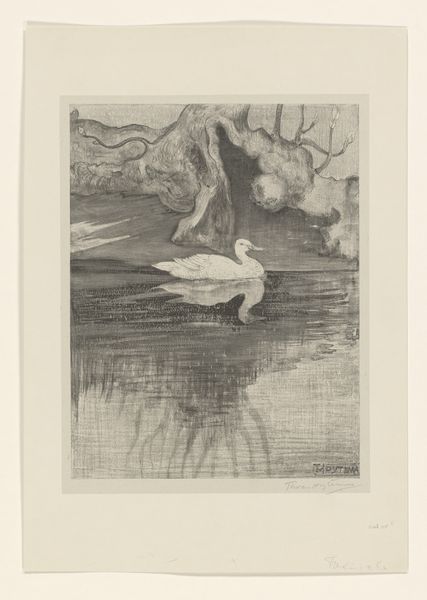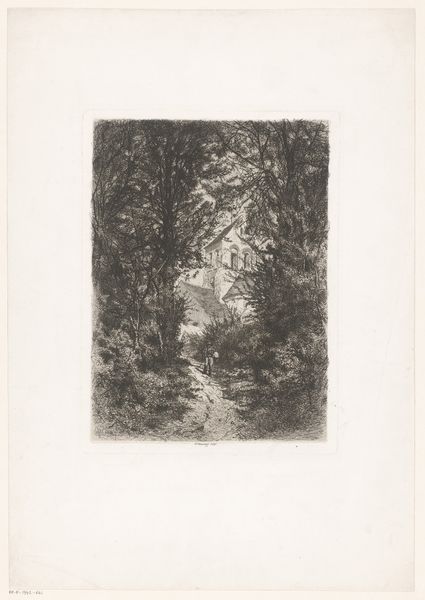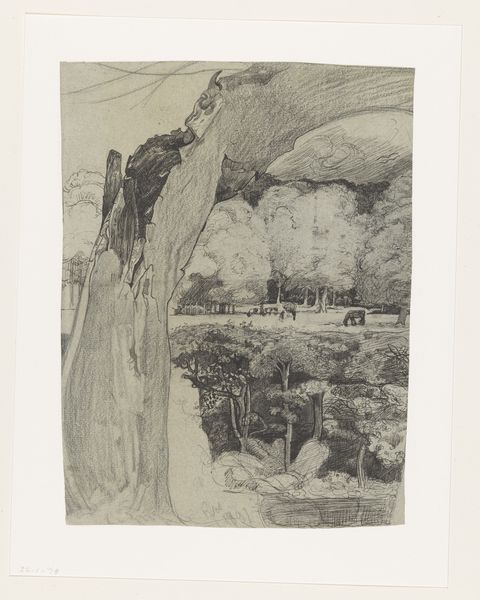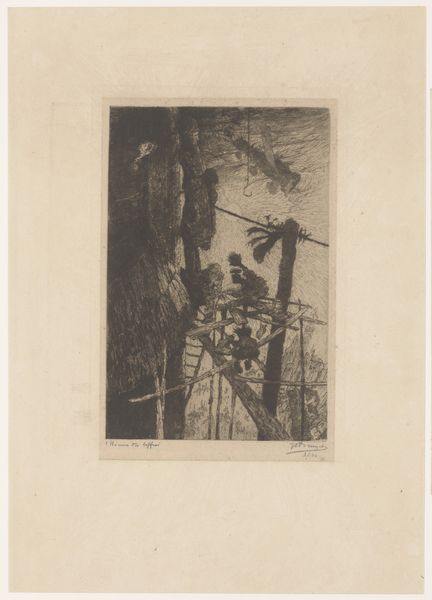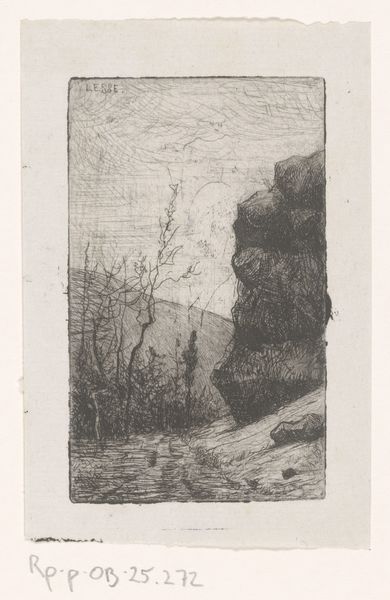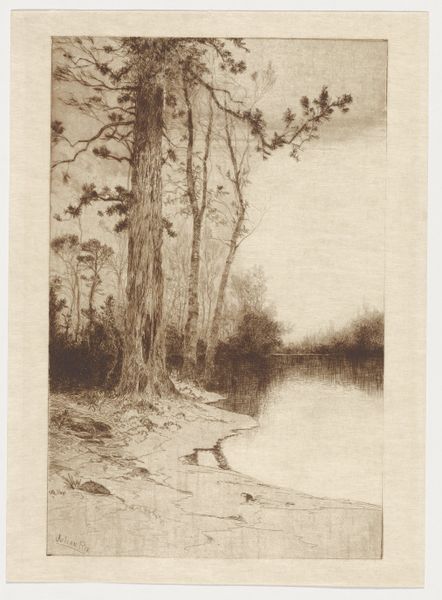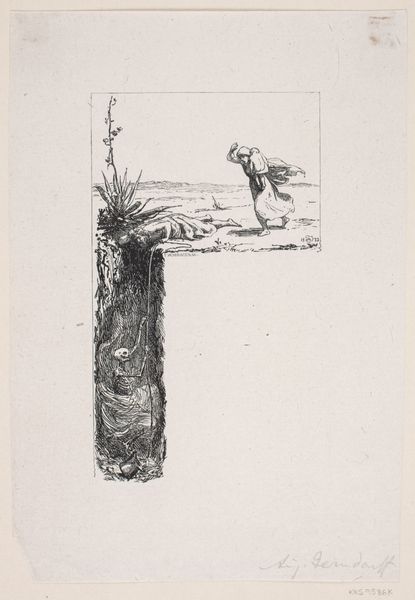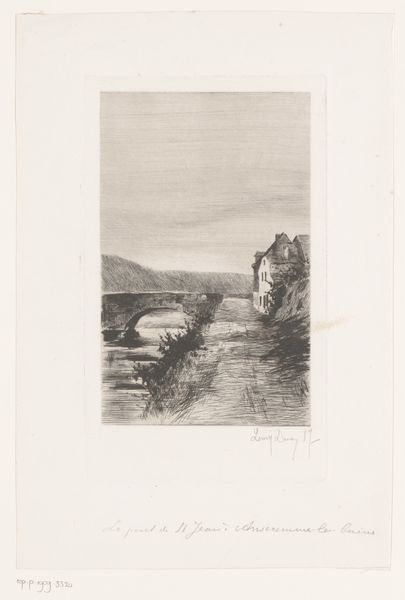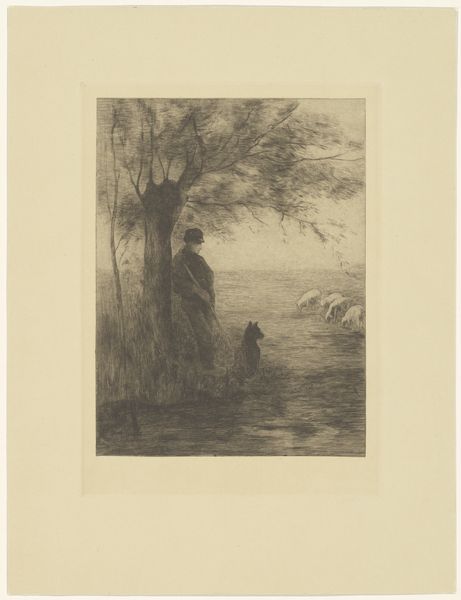
Dimensions: Plate: 9 3/8 × 6 3/16 in. (23.8 × 15.7 cm) Sheet: 13 3/8 × 8 15/16 in. (33.9 × 22.7 cm)
Copyright: Public Domain
Curator: This is Anders Zorn's "Bather (Evening) III," an etching from 1896 currently residing here at The Met. What strikes you when you look at it? Editor: The stark contrast gets me immediately. It's this very compressed, almost claustrophobic scene despite being a waterside view. You've got that figure tucked into what looks like overgrown grass, nearly swallowed by the shadows. It’s intimate and a little brooding, like a secret. Curator: It's interesting that you see claustrophobia. Zorn, particularly through his nudes, engaged with themes of naturalism and freedom. How might the landscape, even a seemingly enclosing one, complicate that sense of freedom? Editor: Well, I see freedom, sure, but there’s also this undercurrent of vulnerability. She’s exposed, literally and figuratively, amidst that dense undergrowth. The title, "(Evening) III," makes me think about twilight, which is an interesting tension, the way it is fading. Does she own this space or is it merely claiming her? Curator: That's a valid question to bring up. Considering the period, this work has often been framed within the discourse of burgeoning female agency, even in how it departs from purely objectifying portrayals of women in art by focusing on their active engagement with the natural world. In terms of medium, the etching contributes to a kind of gritty naturalism that, to my eyes, has been historically understood to emphasize women's ability to defy restrictive expectations in social convention. What's your take on it? Editor: Hmm... Historically, that certainly resonates and maybe Zorn wants to liberate his model... but still there is a sense of melancholic isolation. It’s a feeling that lingers despite the romantic framing. Like maybe she’s wrestling with the confines she wants to shake off, more a promise of liberation than its solid form. I wonder what she's thinking about. Curator: It prompts consideration, then, of the relationship between expectation and lived experience. A relevant point, in my view, for understanding women’s complex engagement with environmental, social and individual freedom, both back then, and in the present! Editor: Definitely, an idea that's captured as much in shadow as in light. And with that image in my mind, it seems time for me to catch a bath too!
Comments
No comments
Be the first to comment and join the conversation on the ultimate creative platform.

